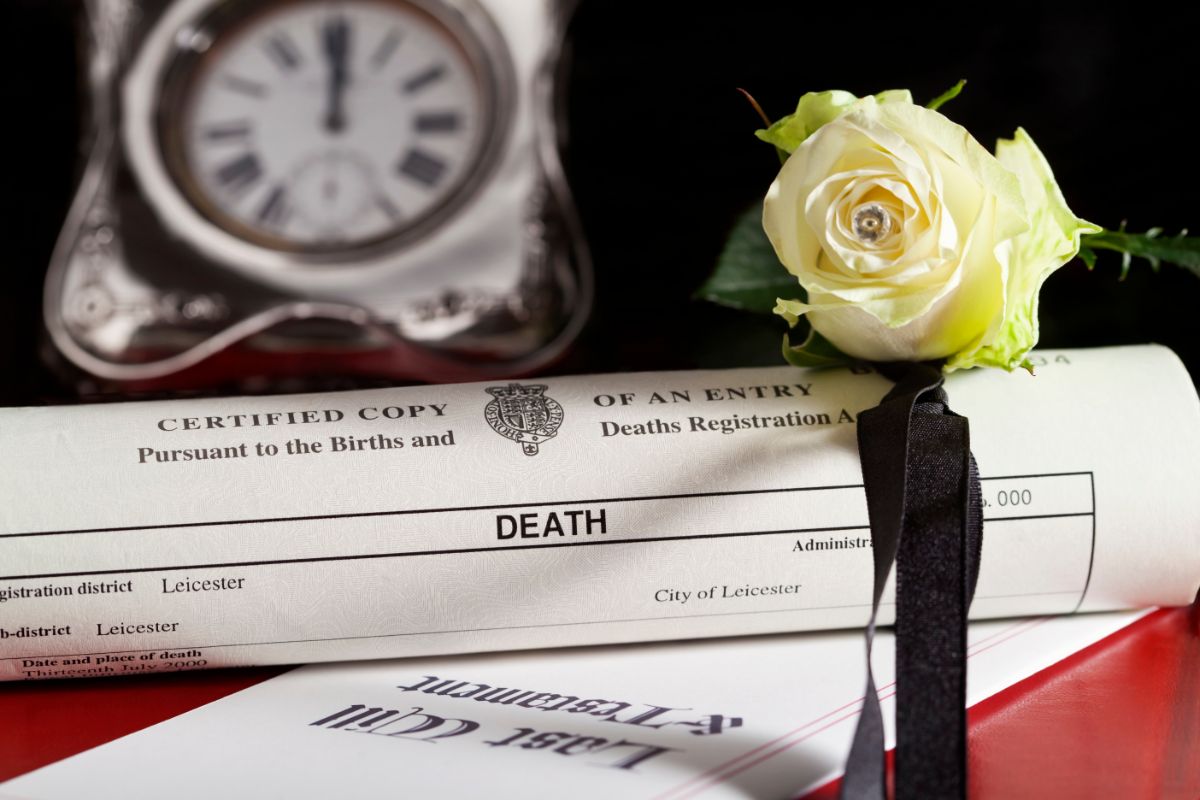What Happens When a Husband and Wife Die in Quick Succession?
When a husband and wife pass away within a short time of each other, it presents unique challenges in the distribution of their assets and estate. The death of both partners in quick succession can complicate the usual procedures for estate management and inheritance, raising questions about how all the property, finances, and belongings should be divided among their heirs. Understanding the legal framework and planning appropriately can help ensure that the couple’s wishes are fulfilled.

State simultaneous death laws come into play in these situations, triggering separate probate estates for married couples who die within 120 hours of each other. These laws can lead to additional costs and potential litigation among heirs over jointly owned assets.
In such scenarios, several key factors come into play:
Survivorship Clauses
These legal provisions determine how the estate is managed if one spouse outlives the other by a short period or if both die simultaneously. A survivorship clause in estate planning ensures that if a husband and wife die simultaneously or within a short time of each other, their assets are distributed according to predetermined instructions. This provides clarity and peace of mind for their loved ones during a difficult time.
Key Points:
- • Purpose: A survivorship clause specifies that one spouse must outlive the other by a set period, usually 30 days, to inherit the other's assets.
- • Protection: This clause prevents complications in asset distribution, avoiding intestacy laws or family disputes that could arise if both spouses die close together.
Incorporating a survivorship clause is crucial for couples who want to safeguard their assets and ensure they are distributed according to their wishes.
Estate Distribution Process

When both spouses die in quick succession, their estate passes according to intestacy laws, which vary by jurisdiction. State laws govern the disbursement of a husband's property if he dies without a will, dictating who inherits the husband's property. These laws generally prioritise immediate family members, such as children, over more distant relatives.
Distribution Steps:
1. Asset Identification: All assets owned by the couple, including property, bank accounts, investments, and deceased person’s accounts, must be identified and valued.
2. Debt Settlement: Any outstanding debts or liabilities must be settled before distribution.
3. Asset Distribution: The remaining assets are then divided among beneficiaries according to the will or intestacy laws.
Example of Asset Distribution:
| Asset | Value | Distribution |
|---|---|---|
| Family Home | £500,000 | Transferred to surviving children jointly |
| Bank Accounts | £200,000 | Equally divided between surviving children |
| Investment Portfolio | £300,000 | Distributed based on provisions in the will or trust |
Jurisdictional variance and individual circumstances can significantly affect estate distribution, so professional legal advice is essential to ensure the estate is handled correctly.
Inheritance and Estate Tax Exemption
When a married couple dies in quick succession, their combined assets may be subject to inheritance taxes, depending on the jurisdiction. Effective use of the available estate tax exemption is crucial in minimising the tax burden on beneficiaries. Strategies such as setting up trusts, making lifetime gifts, or using joint ownership can reduce tax liabilities and protect assets.

Key Considerations:
Tax Rates: Inheritance tax rates vary by jurisdiction, with some applying progressive rates based on the estate's value.
Exemptions and Deductions: Many jurisdictions offer exemptions or deductions, especially for spouses inheriting from each other, to ease the tax burden.
Consulting estate planners or tax solicitors is vital for understanding and applying tax laws effectively, ensuring that the couple’s wealth is preserved and passed on according to their wishes.
The Commorientes Rule and Uniform Simultaneous Death Act
The Commorientes Rule, or ‘simultaneous death rule,’ is crucial in determining asset distribution when both spouses die at the same time, and it is unclear who died first. The rule assumes each spouse outlived the other, meaning each estate is handled independently, which can significantly impact inheritance and taxes.
The Uniform Simultaneous Death Act standardises how estates are managed in these cases, helping avoid disputes and ensuring assets are distributed according to the couple’s wishes.
Quick Succession Relief for Inheritance Tax Purposes
Quick Succession Relief prevents double taxation when multiple deaths occur within a short period, particularly when a husband and wife die in quick succession. The relief helps preserve more of the estate’s value for beneficiaries by reducing or eliminating the second inheritance tax charge.
Conditions for Relief:
Timeframe: Both deaths must occur within five years of each other.
Tax Liability: The estate must have been liable for inheritance tax on both occasions.
Lineal Descendants: At least part of the first deceased's estate must pass to lineal descendants, such as children or grandchildren.

Relief is not automatic and requires an application within two years after 12 months from the date of death. Seeking professional advice is crucial due to the complexities involved in determining eligibility and calculating relief amounts.
Frequently Asked Questions
What happens to the joint assets and properties owned by the couple?
When a husband and wife die in close succession, the distribution of their joint assets and properties depends largely on whether they had a valid will. Separate property can lead to complications in probate, particularly if titling and beneficiary designations do not align, potentially requiring separate probate cases for each spouse's estate.
How are the couple's debts and liabilities handled after their deaths?
After a couple's deaths, their debts and liabilities are settled through legal procedures before any remaining assets are distributed to beneficiaries. The process involves identifying assets, notifying creditors, and using estate funds to pay off debts.
Are there any specific legal requirements or estate planning documents needed when dealing with the couple's estate?
Specific legal requirements and documents are necessary when handling a couple's estate. The process typically involves administering their assets, settling debts, and distributing the remaining property to heirs. Key documents include death certificates, a will (if available), letters testamentary or administration, and an inventory of assets.
What happens if the couple had minor children or dependents?
If a couple with minor children or dependants passes away, the legal system appoints a guardian to care for them. The court determines the guardian based on the best interests of the children or dependants, considering factors like the potential guardian's relationship to the minors and their ability to provide care.
Does the order of death between the husband and wife affect the distribution of their estate?
The order of death between a husband and wife can significantly impact the distribution of their estate. If one spouse dies before the other, their estate is typically distributed according to intestacy laws, which often prioritise the surviving spouse and children. Proper estate planning and legal advice are essential to ensure that assets are distributed as intended and to potentially minimise estate taxes
.Conclusion
When a husband and wife pass away in quick succession, several legal considerations must be addressed. A key element is the survivorship clause, which guarantees that the surviving spouse inherits the deceased's assets in the event of simultaneous or near-simultaneous deaths.
The estate distribution process involves identifying beneficiaries and allocating assets according to the couple's will or, in the absence of a will, applicable laws. This step is vital for aligning the distribution with the couple's intentions and properly managing their estate.
Inheritance taxes may apply depending on the jurisdiction and estate value. However, relief measures such as Quick Succession Relief can help mitigate these tax burdens, preserving more of the estate for the beneficiaries.

